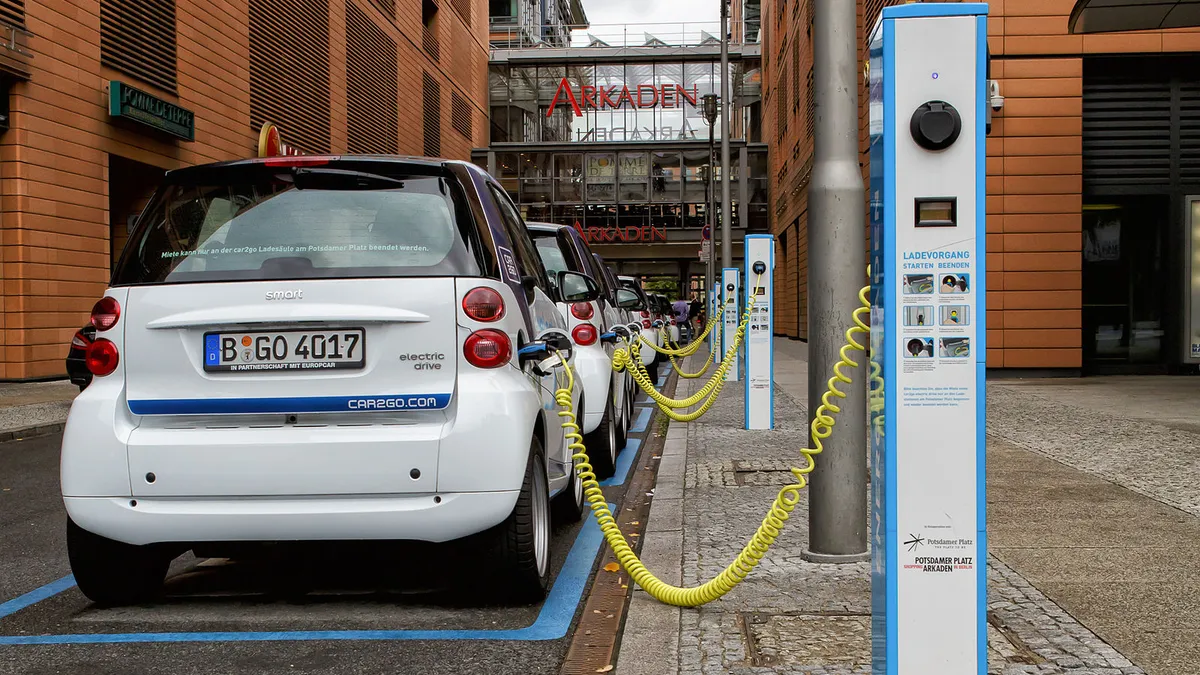Dive Brief:
- Demand charges continue to be a drag on high voltage, direct current electric vehicle charging ports, according to new research by the Great Plains Institutes for the Midcontinent Transportation Electrification Collaborative.
- Economic disadvantages include both profit and the ability to attract third-party investment, according to the report, which looked at electric rates and potential direct current fast charging (DCFC) infrastructure along the Minnesota-to-Michigan corridor on Interstate 94, operating between 50 kW and 350 kW. Lower-wattage stations were significantly more likely to be profitable.
- The Midcontinent region currently has 425 DCFC plugs, according to GPI's research, but the region needs more than 4,000 DCFC plugs by 2030 in order to grow EV adoption, according to the National Renewable Energy Laboratory.
Dive Insight:
As more research points to the incompatibility of demand charges and DCFC infrastructure, utilities are beginning to develop alternative rates to encourage electrification.
"Today’s economics and the average electric utility rates mean that nearly all DCFC scenarios lose money," GPI study authors Dane McFarlane and Matt Prorok wrote. It is a "chicken and egg scenario." Greater access to DCFC charging stations will help accelerate EV adoption, "but DCFC charging stations will currently lose money every year until increased EV adoption results in more charging customers each day."
Demand charges are typically paid by commercial and industrial electric customers with high peak usage, to allay the costs of expensive infrastructure. For EV stations, the power draw can be intense: Stations with more than one plug can hit 1 MW of demand if multiple vehicles charge simultaneously.
GPI's research showed that it is generally less expensive to operate a single 50 kW charger, and those can break even with less than a dozen customers per day. However, "in most other cases, it is very difficult for a DCFC station to break even due to demand charges."
The report illustrated that stations capable of pulling 150 kW can break even about half the time, but increasing capacity further "makes it nearly impossible for a station operator to break even" unless there is no demand charge.
Because DCFC infrastructure is considered vital to the long-term future of electric vehicles, utilities are looking for alternatives.
Pacific Gas & Electric last year proposed a new commercial electric vehicle charging rate that it compared to a subscription model, aiming to encourage new investments in EV infrastructure and commercial fleets. And Xcel Energy, in some service areas, established a "demand limiter" provision that limits the billable kilowatt quantity used to calculate demand charges.
"There is clearly a balance to be struck between possible costs imposed by DCFC in certain settings, and considerable benefits from the increased EV adoption it can enable," GPI wrote. "The barrier to economic feasibility presented by demand charges is greater for higher capacity DCFC, which many industry experts expect will be needed in the future to allow for faster charging rates."














